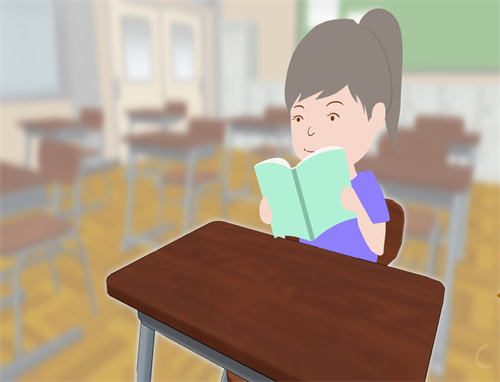今天小编给大家带来了托福阅读中的十大“路标”,希望能够帮助到大家,下面小编就和大家分享,来欣赏一下吧。
托福阅读中的十大“路标”
一、列举和并列句
列举指的是: FirstFirst, Second, Third, 等逐条列出。;等逐条列出。并列句是指: A , B and C ,即逐项列出。它们共同的特征是列出二点或三点以上的条目。该类型语言点常考的题型是“细节性问题”,主要有两种:
1. Which 题型
该题型只要求从并列的三顶中选一项作为答案,其它条目与题目无关。在这种情况下,往往题目的答案出自后一个选项 。
2 . EXCEPT 题型
该题型俗称“三缺一”题型,即题目 4 个选项中有三个符合文章内容,剩下一个不符合,题目便是要求选出这个不符合文章内容的选项。例如: All of the following are mentioned as types of evidence concerning handedness EXCEPT
这种题型只适合于考并列、列举句,这是因为它要求其三个选项一定是文章中出现的,也就是并列或列举之处。利用这一特点.我们在读文章的时候就可多留意,如看到并列、列举句,可预想其有可能被考到;如发现题目中有“三缺一”题型,则应到并列、列举处找答案。
二、否定及转折句
否定句是指带有 NO 或 NOT , NEVER 等否定词的句子,而转折句则指带有 HOWEVER , BUT 或 RATHER 等关联词引导的句子,它们可以用下面的句型说明: A is not B , as C , but is D 。对于以上的句型常出“推断性问题”。
三、举例句
句中由 as 或 such as , for example 等引导的短语或句子为举例句,常考“推断性问题”和“细节性问题”。上面句型中的 as C 为插入的举例句。
四、数字与年代
文中的数字、年代、日期等常常是出题者注意的考题点,如 1996 年 10 月第 48 题。
五、及性词汇
文章中若出现 must , all , only , anyone , always , never 等性词汇或 first , most beautiful 等词汇,往往是考题要点,一般出“细节性题目”。这是因为它们都有一个共同的特点,那就是 概念 , 答案一 ,无论是出题还是做题,不会产出歧义和疑问,因此很容易出题,答案正确。相反地,如果文章中出现相对性的词汇、例如 Some of the people chose red hats,some chose green hats,and others blue ones. 其中 some 为相对性词汇,如果我们出这样一道题: What color hats did some people choose? 那么就没有一正确的答案,因为有可能为 red,green 或 blue ,给评卷带来困难。
六、比较级及比喻
如果文中含有 more than 或 as as , like ( a fly )等句型,则为比较级或比喻句结构,往往也是考题点,一般出“推断性题目”。
七、同位语及插入语
文章中带有由 that is , i.e. , or 等词汇引导的名词词组,放在一个名词后面,为同位语;插入语是指副词、不定式、分词、从句等结构故在句首,句中或句尾,不做句子成分,但修饰整个句子、表达作者感情的语法结构。 这些用逗号隔开的持殊结构往往也是考查的重点,一般会出“细节性题目”。
八、因果句
句中若有如下结构或词汇的称为因果句:
(1) 因果连词: because , since , for , as , therefore , so , consequently 等
(2] 表示因果的动词: cause , result in , originate from 等;
(3) 表示因果的名词: base, basis, result,consequence 等,这些因果句都是指明某两个事件之间因果关系的,尤为出题者所青陈.因为通过出题可以考查文中两个事件内在的因果关系。此种句型一般出“推断性问题”。
九、段落句
文章各段句 ( 段首句 ) 和末段员后一句 ( 文尾句 ) 都是十分重要的地方,往往是文章作者表达中思想,进行总结综述的地方,因此常出 (1) 主题性问题, (2) 细节性问题.和 (3) 结构性问题。
十、特殊标点
有一些特殊标点的含义也属于考查范围,它们是:
(1) 破折号,表示解释.考细节性问题;
(2) 括号,表示解释.考细节性问题;
(3) 冒号,一股同上,有时冒号也表示列举,则考“ EXCEPT ”题目;
(4) 引号.表示引用,考细节性问题:
(5) 惊叹号,表示作者感情,考态度性问题。
综上所述,我们可以利用上面所介绍的考题点,作为“路标”,迅速地指引我们找到正确答案;问时作为出题规律,检验自己所选答案的正确性。
托福阅读真题原题+题目
Researchers in the field of psychology have found that one of the best ways to make an important decision, such as choosing a university to attend or a business to invest in, involves the utilization of a decision worksheet. Psychologists who study optimization compare the actual decisions made by people to theoretical ideal decisions to see how similar they are. Proponents of the worksheet procedure believe that it will yield optimal, that is, the best decisions. Although there are several variations on the exact format that worksheets can take, they are all similar in their essential aspects. Worksheets require defining the problem in a clear and concise way and then listing all possible solutions to the problem. Next, the pertinent considerations that will be affected by each decision are listed, and the relative importance of each consideration or consequence is determined. Each consideration is assigned a numerical value to reflect its relative importance. A decision is mathematically calculated by adding these values together. The alternative with the highest number of points emerges as the best decision.
Since most important problems are multifaceted, there are several alternatives to choose from, each with unique advantages and disadvantages. One of the benefits of a pencil and paper decision-making procedure is that it permits people to deal with more variables than their minds can generally comprehend and remember. On the average, people can keep about seven ideas in their minds at once. A worksheet can be especially useful when the decision involves a large number of variables with complex relationships. A realistic example for many college students is the question What will I do after graduation? A graduate might seek a position that offers specialized training, pursue an advanced degree, or travel abroad for a year.
A decision-making worksheet begins with a succinct statement of the problem that will also help to narrow it. It is important to be clear about the distinction between long-range and immediate goals because long-range goals often involve a different decision than short-range ones. Focusing on long-range goals, a graduating student might revise the question above to What will I do after graduation that will lead to successful career?
1. What does the passage mainly discuss?
(A) A tool to assist in making complex decisions.
(B) A comparison of actual decisions and ideal decisions
(C) Research on how people make decisions
(D) Differences between long-range and short-range decision making
2. The word essential in line 7 is closest in meaning to
(A) introductory
(B) changeable
(C) beneficial
(D) fundamental
3. The word pertinent in line 9 is closest in meaning to
(A) relevant
(B) preceding
(C) insightful
(D) responsive
4. Of the following steps, which occurs before the others in making a decision worksheet?
(A) Listing the consequences of each solution
(B) Calculating a numerical summary of each solution
(C) Deciding which consequences are most important
(D) Writing down all possible solutions
5. According to decision-worksheet theory, an optimal decision is defined as one that
(A) has the fewest variables to consider
(B) uses the most decision worksheets
(C) has the most points assigned to it
(D) is agreed to by the greatest number of people
6. The author develops the discussion in paragraph 1 by means of
(A) describing a process
(B) classifying types of worksheets
(C) providing historical background
(D) explaining a theory
7. The author states that On the average, people can keep about seven ideas in their minds at
once (lines 17-18) to explain that
(A) most decisions involve seven steps
(B) human mental capacity has limitations
(C) some people have difficulty making minor as well as major decisions
(D) people can learn to keep more than seven ideas in their minds with practice
8. The word succinct in line 24 is closest in meaning to
(A) creative
(B) satisfactory
(C) personal
(D) concise
9. Which of the following terms is defined in the passage ?
(A) Proponents (line 5)
(B) Optimal (line 5)
(C) Variables (line 17)
(D) Long-range goals (line 25)
10. The word it in line 24 refers to
(A) worksheet
(B) problem
(C) distinction
(D) decision
11. The word revise in line 26 is closest in meaning to
(A) ask
(B) explain
(C) change
(D) predict
PASSAGE 33 ADADC ABDBB C
托福阅读中的十大“路标”
上一篇:托福阅读备考之常考话题汇总
下一篇:托福备考之怎样养成良好阅读习惯呢






